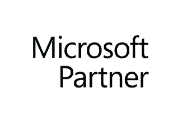Consider all the atoms in 10 million galaxies …
At midnight on June 18th, 1997, the DESCHALL Project bore fruit. The challenge had been to use ‘Brute Force’ to discover the meaning of a message which had been encrypted. Going through up to seven billion possibilities per second, the key was cracked after 96 days by thousands of computers running simultaneously. The message was revealed to be “Strong cryptography makes the world a safer place”.
Back then, the specialist software used to brute-force the ‘key’ was designed for use on Pentium 200MHz computers which of course are now very outmoded by chips running faster by orders of magnitude. This forced The National Institute of Standards and Technology to initiate what would morph into the formidable Advanced Encryption Standard (AES). Today, AES 256-bit encryption stands as a standard in the encryption landscape.
One might be forgiven for thinking that this 256-bit encryption is unhackable. After all, the largest number expressed by 256 bits is of the order of magnitude of the number of atoms contained in 10 million galaxies. Give or take a few atoms.
Yet even these mind-boggling large numbers used in current 256-bit encryption standards can’t withstand the onslaught of quantum computing, when it’s fully realised. This means novel methods of post-quantum encryption to secure information must be innovated and this will represent both opportunities and threats for businesses, as is always the case with any kind of disruption.




